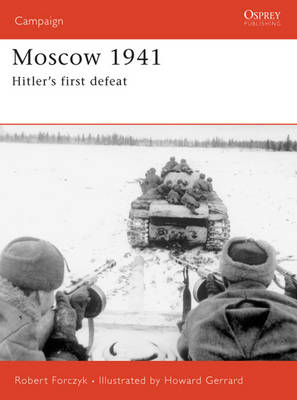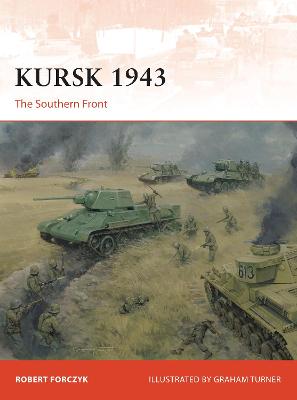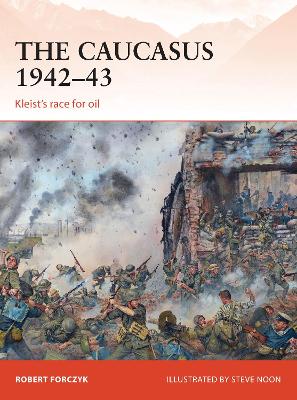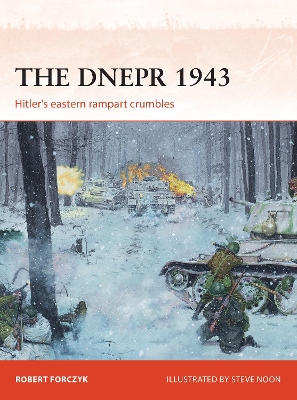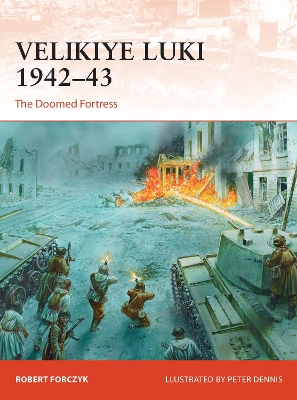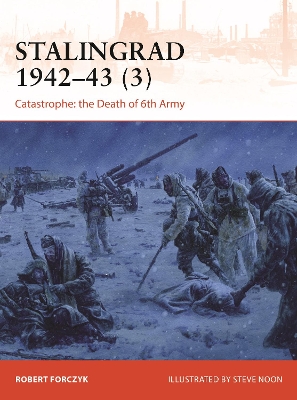Campaign
14 primary works • 18 total works
Book 153
Book 163
Book 167
Book 189
Book 205
Book 215
Book 231
Book 245
Book 254
Book 272
This book focuses on the southern front of this campaign, which featured one of the biggest clash of armour of the warin the battle of Prokhorovka which involved over a thousand tanks. It examines in detail the tactics and mistakes of the army commanders as they orchestrated one of the bloodiest battles in World War II. Using campaign maps, stunning photographs and vivid artwork, this new study, a companion to Campaign 272 Kursk 1943: The Northern Front, examines whether that the German offensive was doomed from the start as it takes the reader through this titanic clash of armour.
Book 281
Book 291
Book 318
With the help of stunning specially commissioned artwork, this book tells the enthralling story of the impressive but strategically foolish German stand at Kuban, which tied down seven Soviet armies in a sideshow battle of attrition, which the Soviets dubbed 'the Kuban meat grinder.'
Book 351
This illustrated title reveals the full story of the tense seven-week siege of Velikiye Luki, which saw Soviet forces striving to liberate the city in the face of a determined garrison and fierce relief efforts. Detailed analysis by renowned World War II historian Robert Forczyk is complimented by stunning and historically accurate battlescenes, maps, and bird's-eye-views to offer a comprehensive look at this gripping campaign.
The expectation was for a rapid victory – instead, German forces had to fight hard just to reach the outskirts of Stalingrad, and then found themselves embroiled in a protracted urban battle amid the ruins of a devastated city on the Volga. The Soviet Red Army was hit hard by the initial German offensive but held onto the city and then launched Operation Uranus, a winter counteroffensive that encircled the German 6. Armee at Stalingrad. Despite a desperate German relief operation, the Red Army eventually crushed the German forces and hurled the remnants of the German southern front back in disorder.
This first volume in the Stalingrad trilogy covers the period from 28 June to 11 September 1942, including operations around Voronezh. The fighting in the Don Bend, which lasted weeks, comprised some of the largest tank battles of World War II – involving more armour than the tanks employed at Prokhorovka in 1943.
The German 4. Armee was commanded by Generaloberst Gotthard Heinrici, one of the Wehrmacht’s top defensive experts. Although badly outnumbered, Heinrici’s army gamely held off two Soviet fronts for seven weeks. Eventually, the 4. Armee’s front was finally broken and Smolensk was liberated on 25 September 1943. However, the Western Front was too exhausted to pursue Heinrici’s defeated army, which retreated to the fortified cities of Vitebsk, Orsha and Mogilev; the 4. Armee would hold these cities until the destruction of Army Group Centre in June 1944. Operation Suvorov focuses on a major offensive that is virtually unknown in the West and which set the stage for the decisive defeat of Heeresgruppe Mitte in the next summer offensive.


